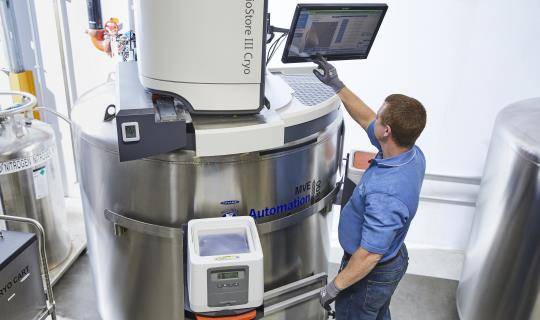Article: What's Your Logistics Vision
By World Courier
Every CEO will be able to describe their target patient population, their clinical capability and their strategy for developing a manufacturing process, but how many can describe their strategy for connecting all of this to the patient? That is, what is their logistics vision?
Without effective logistics the therapy will never reach the patient, making its safety and efficacy irrelevant. In addition, to change the manufacturing process once a therapy is approved for market launch is incredibly slow and costly, but a flexible logistics system can add value throughout the life of the therapy. This is because logistics requirements change as a therapy transitions through the clinical trial process.
It was discussed during the logistics session at ISCT that the processes used to deliver at clinical trial scale will not work at commercial scale. Inefficiencies during clinical phases are not as evident due to the relatively lower volumes, and the limited shipping distances. For example the geography within each clinical trial phase may look like:
- Phase I = cross-campus transport
- Phase II = cross-country shipments
- Phase III = international
- Commercial = global
All of these stages bring growing challenges of complexity, volume, customs regulations, storage etc. The financial stakes are also higher as the volume increases, making a flexible logistics platform that is fit for purpose at each stage a commercial necessity.
Market launch
Bearing in mind that most CEOs are looking to get their therapy to market launch within five years, there is no time to wait. They need a vision of what the commercial scale logistics platform will look like. From this they can work with their logistics partner to build, test and optimize their logistics platform through the clinical trial phase so that there is a system ready to go, post-market approval.
To achieve this they also need to have an understanding of where the logistics is most constrained. Most therapy developers look at the inbound donation and outbound therapy, with significant focus going on cryopreservation to extend the shelf life and therefore, the shipping window. However, there needs to be a balanced view. For example, while cryopreservation enables a centralized manufacturing model, it negatively impacts cell viability. On the other hand, if shipping is “fresh” at 2-8°C this will help maintain product viability but result in an often <24hr shelf life, meaning that a single manufacturing center will only be able to serve a relatively small geographic region.
Then, what about the monitoring samples post infusion? This is the industry’s forgotten shipment. It is often a blood sample and so has to be moved under similar time and temperature constraints to the fresh shipment. This means that if the therapy developer has managed to cryopreserve the donation and therapy, unless they have qualified multiple testing laboratories, they still have a bottleneck that will impact the manufacturing location.
From this it can be
understood that logistics is a key component in defining the economic viability
of any therapy and thus, needs to be developed and planned early, with a
long-term logistics partner used to add value. This vision needs to be established
from the outset and then fine-tuned as the therapy evolves – essentially “how
do you score if you don’t know what the goal looks like?”





